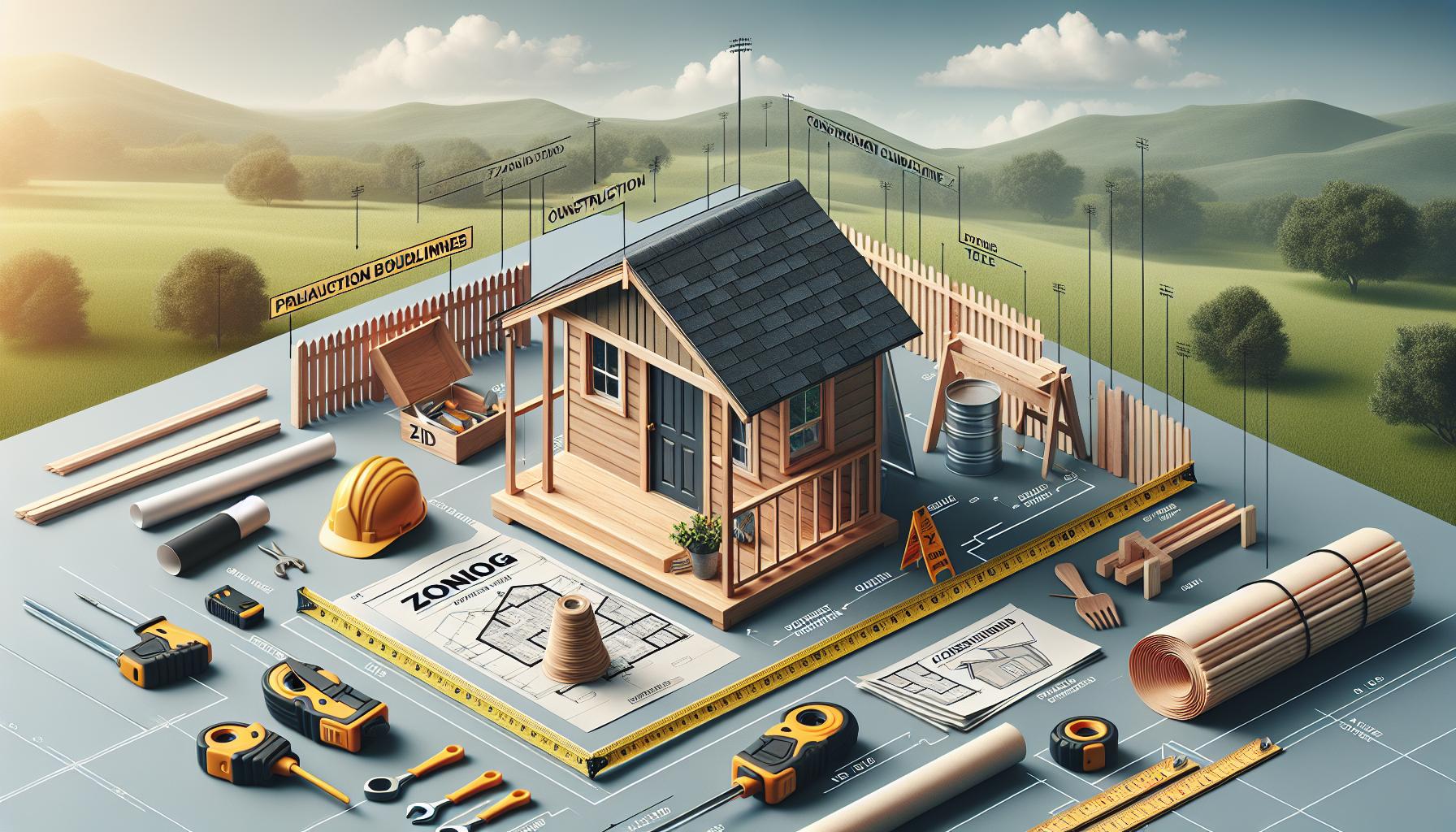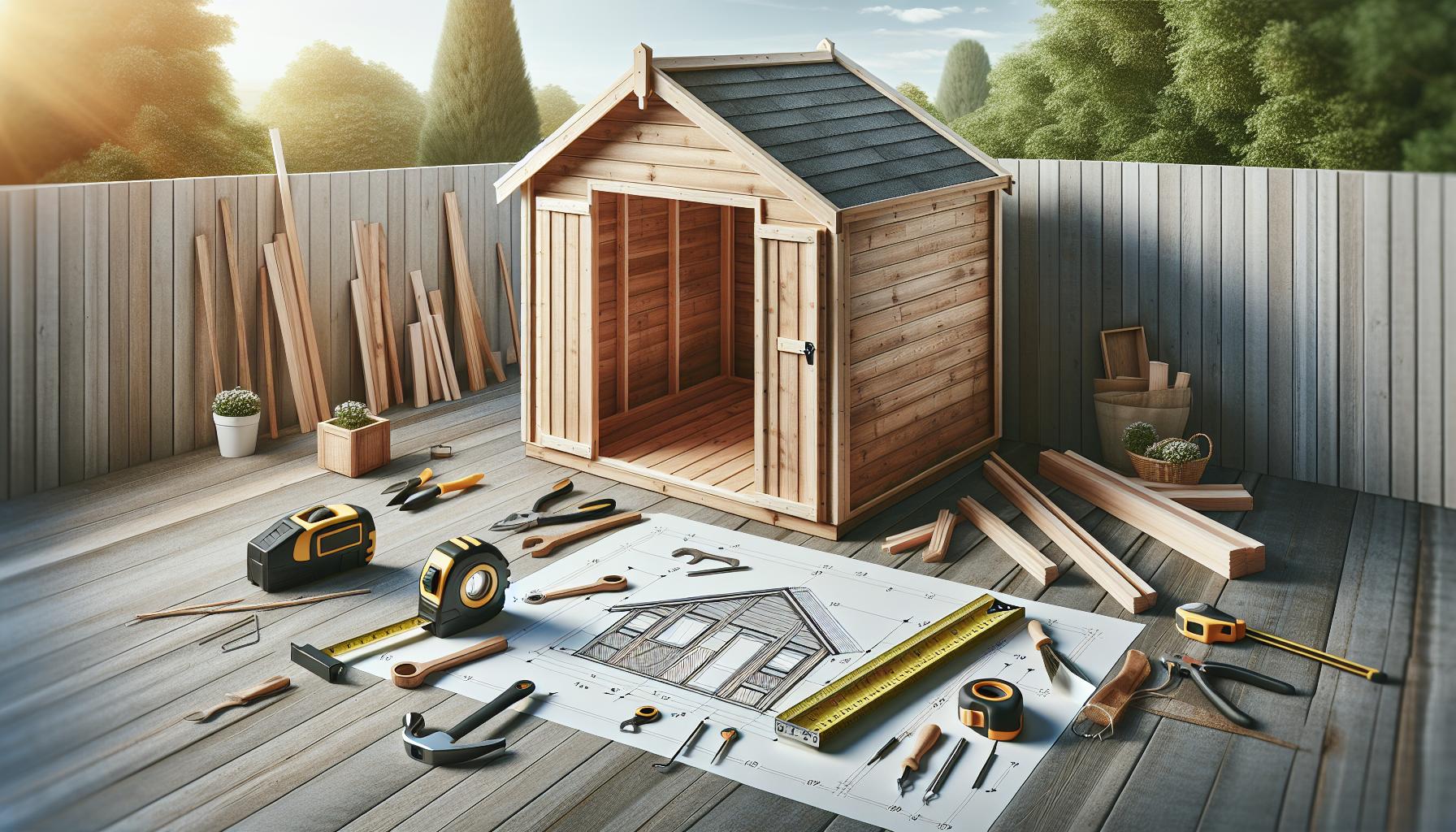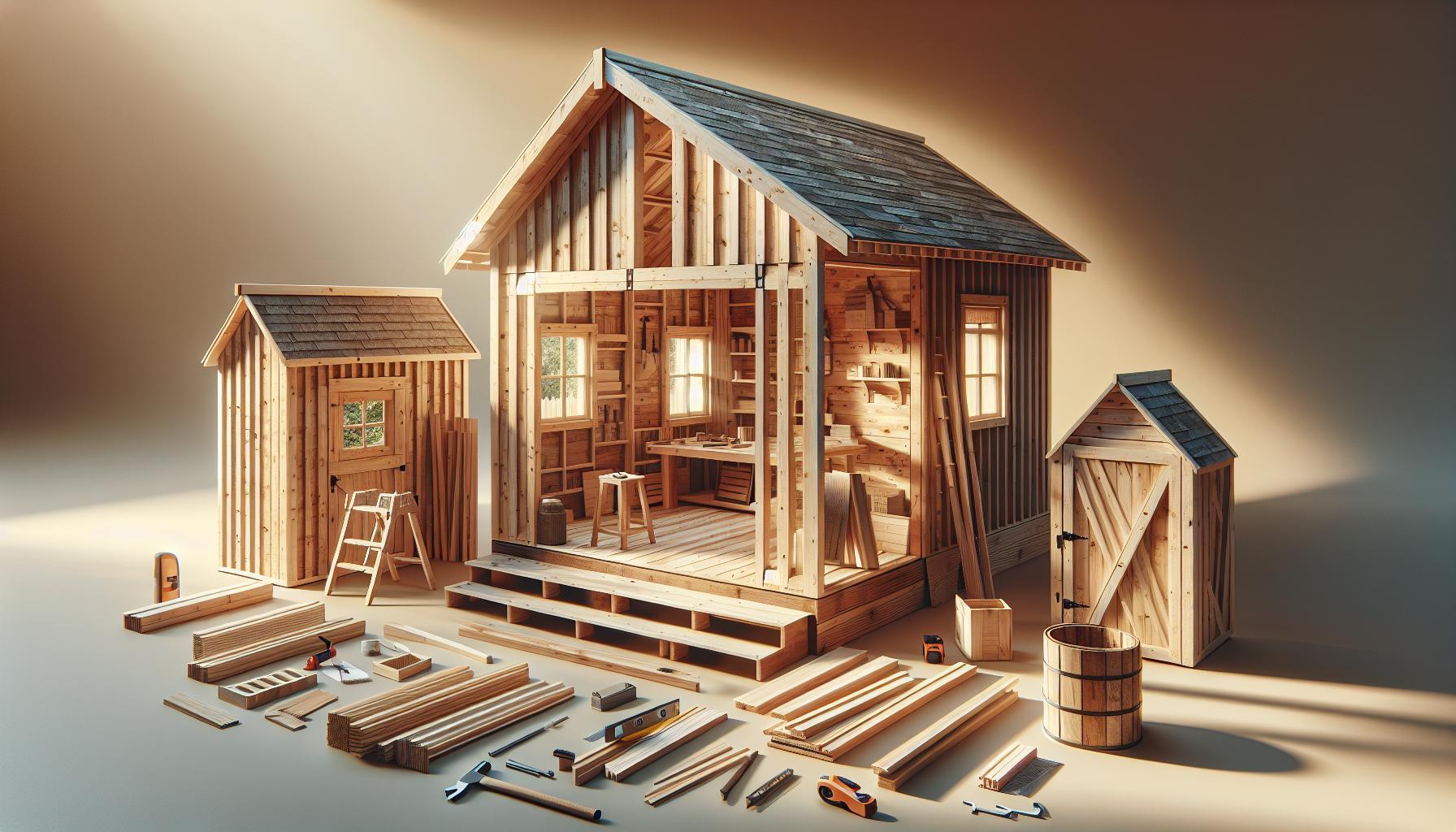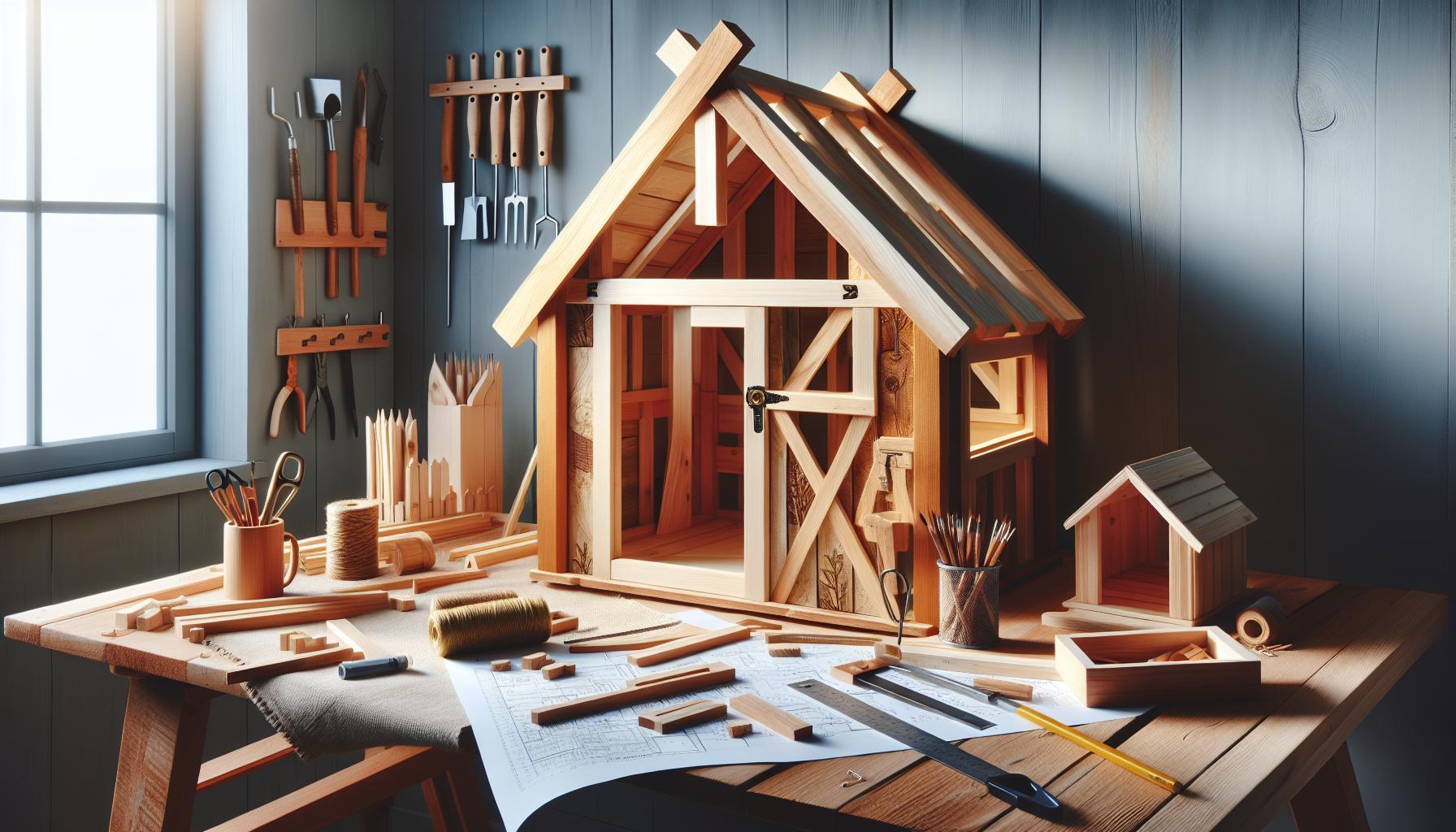Building a shed can be a fantastic way to enhance yoru outdoor space, but figuring out the appropriate distance from your property line is crucial. Many homeowners overlook zoning requirements, which can lead to costly fines or the need for relocation. Understanding local regulations ensures a smooth project while avoiding disputes with neighbors and staying compliant with city codes.
Understanding Setback Regulations: What You Need to Know
Understanding how close you can build to your property line is essential for any homeowner considering adding structures like sheds, garages, or other outbuildings. Setback regulations are the governing standards that dictate how far structures must be positioned from property lines,streets,and other relevant boundaries. These regulations can vary significantly based on local zoning laws, the type of structure, and the specific zoning district in which your property resides.
Key Factors Influencing Setback Regulations
Several vital factors influence setback requirements,including:
- Zoning District: Properties are frequently enough categorized into different zoning districts,which define permissible uses and building regulations. Each district may have distinct setback measurements.
- Structure Type: Different structures can be subject to varying setbacks. For instance, a residential shed might have different regulations compared to a commercial building.
- Lot Size and Shape: The size and configuration of your lot can affect required setbacks. Larger lots may have more lenient requirements, while irregularly shaped lots frequently enough face stricter rules.
- Local Variances: Sometimes,homeowners can apply for variances that allow them to build closer to property lines than what is typically permitted,even though this process may involve additional scrutiny and justification.
Typical Setback Requirements
While specific requirements will vary by locality, many areas have common standards that can serve as a guideline. Below is a general overview of typical setback distances:
| Structure Type | Side yard Setback | Front Yard Setback | Rear Yard Setback |
|---|---|---|---|
| Shed (Residential) | 3-10 feet | 5-30 feet | 3-10 feet |
| garage (Residential) | 5-10 feet | 20-30 feet | 10-15 feet |
| Commercial Building | 10-20 feet | 20-40 feet | 10-30 feet |
Understanding these regulations can help you avoid potential fines or the costly process of removing a non-compliant structure after construction. Always check with your local planning department or zoning board to confirm the specific setback regulations that apply to your property and intended construction.It’s essential to ensure compliance with zoning requirements when considering “How Close to Property Line Can I Build a Shed?” to maintain good relationships with neighbors and adhere to community development goals.
The Importance of Local Zoning Laws in Shed Construction
Navigating local zoning laws is crucial when planning to build a shed on your property. these regulations are not mere formalities; they exist to ensure safety, maintain property values, and respect the rights of neighbors. Adhering to zoning laws can save you from costly modifications or legal disputes down the line. Understanding how close to the property line you can build a shed is essential. Local ordinances vary significantly, meaning what applies in one neighborhood may not be valid in another.
Why Zoning Laws Matter
Zoning laws dictate various aspects of construction,including land use,building height,and setbacks from property lines. As a notable example,many communities have specific requirements regarding the distance a shed must be from the property line.These rules are designed to minimize potential nuisances,such as obstructing views or sunlight. Non-compliance can lead to fines or the requirement to dismantle or relocate the shed, making it imperative to check these regulations before proceeding with construction.
Common Zoning Requirements
When evaluating the question of how close to the property line you can build a shed, consider the following typical zoning requirements:
- Setback Requirements: Many areas require that sheds be placed a certain distance from the property line—often between 3 to 10 feet.
- Building Size: Local laws may set limits on the maximum size of sheds without requiring a permit, often around 120 square feet in some regions.
- Usage Restrictions: Some zoning laws may also restrict what the shed can be used for, such as storage versus a workspace.
Practical Steps to Ensure Compliance
Before you start building, take the following actions to ensure your project adheres to local zoning laws:
- Research Local Codes: Visit your local town or city website to find specific zoning regulations regarding shed construction.
- Consult with Neighbors: communicating with nearby property owners can prevent misunderstandings and foster good community relations.
- Consider a Survey: Hiring a professional surveyor can definitely help accurately determine property lines, ensuring compliance with setback requirements.
By adhering to local zoning laws, you not onyl protect your investment but also enhance the harmony and appeal of your neighborhood. Always remember that regulations can vary widely, so it’s essential to do your homework based on the specific requirements applicable to your location.
How to Determine Your Property Line Accurately
Accurately determining your property lines is crucial when planning any construction, such as a shed. Not only will this help you avoid potential disputes with neighbors, but it’s also essential to comply with zoning regulations. Property lines often dictate how close to the property line you can build a structure,influenced by local zoning requirements. Recognizing your boundaries starts with a little research and proper tools.
Steps to Accurately Determine Your property Lines
- Review Your Property Deed: One of the first places to check is your property deed. It usually contains a legal description of your land, including boundary dimensions and locations.
- Use a Land Surveyor: Hiring a licensed land surveyor can provide the most accurate depiction of your property lines. They utilize specialized tools and knowledge of local zoning laws to mark your boundaries clearly.
- Check Local Zoning Regulations: Familiarize yourself with your municipality’s zoning requirements. Many local governments publish zoning maps that outline different zones and restrictions regarding setbacks, which influence how close to property line you can build a shed or similar structures [[1]](https://www.bellhaven.org/learn/Setback-Lines).
- Consult with Neighbors: Engaging with neighbors can sometimes reveal insights about ancient property lines or any previous disputes, potentially clarifying boundaries and ensuring good neighborly relations.
Utilizing Technology for Precision
In today’s digital age,various tools can definitely help in identifying your property line more precisely. Geographic Information Systems (GIS) and online mapping applications allow homeowners to visualize property lines based on public records. However, these tools can sometimes lack the accuracy of a professional survey. when considering how close to the property line you can build, it’s wise to combine these digital resources with official documents and local guidelines.
| Method | Accuracy | Cost |
|---|---|---|
| Review Property Deed | Basic | Free |
| Hire a Land Surveyor | High | Varies ($300-$1,000) |
| Check Local zoning Regulations | Moderate | Free |
| Use GIS/Online Tools | Variable | Free to low cost |
By ensuring you have an accurate understanding of your property lines, you not only protect your investment but also enhance the possibility of smoothly carrying out your building plans while adhering to zoning regulations.
Typical Setback Distances: What to Expect in Your Area
Understanding typical setback distances is essential for anyone considering building a shed, as these regulations can determine not only the feasibility of your project but also its potential success within your community. Setback distances vary by location, influenced by factors such as zoning regulations, local ordinances, and property types. Generally, municipalities enforce these setbacks to ensure safety, promote aesthetic harmony, and respect neighbors’ privacy.
In many areas, the following are common setback distances you might encounter:
| Zone type | Front Setback | Side Setback | Rear Setback |
|---|---|---|---|
| residential | 15-25 feet | 5-10 feet | 10-15 feet |
| Commercial | 10-15 feet | 0-5 feet | 10-20 feet |
| Agricultural | 25-50 feet | 15-20 feet | 25-30 feet |
These distances are typical but can vary significantly based on your local zoning laws. As an example, in a residential area, the rule may require you to maintain a minimum of 10 feet from your property’s side boundaries to emphasize space between homes, while adjacent commercial zones might have relaxed side setbacks to encourage land use efficiency.
It’s crucial to check with your local zoning office before initiating construction. They can provide specific figures, outline any exceptions, and guide you on any permits you may need.Moreover, consider speaking with neighbors and gathering community feedback, which can foster goodwill and ensure larger projects harmonize well with existing properties. Understanding how close to the property line you can build a shed becomes clearer when you take these proactive steps.
Navigating Homeowners Association Rules and Restrictions
Understanding the specific rules and restrictions of a homeowners association (HOA) is crucial when considering projects like constructing a shed. These regulations can greatly influence not only the design and placement of your shed but also your ability to build it at all. HOAs are established to maintain the aesthetics and property values within a community, and they often have strict guidelines that homeowners must follow. Therefore, before diving into your project, it’s imperative to conduct thorough due diligence regarding how close to your property line you can build a shed.
Understanding HOA Guidelines
When looking at the question of “How close to the property line can I build a shed?” you will first need to refer to your HOA’s governing documents, which typically include bylaws, CC&Rs (Covenants, Conditions, and Restrictions), and architectural guidelines. These documents outline specific restrictions regarding setbacks, which are the minimum distances your shed must remain from property lines. Some common considerations include:
- Setback Requirements: Often,HOAs will specify a minimum distance from the property line to ensure sufficient space between homes and outbuildings.
- Design Restrictions: The HOA may dictate the materials, colors, and overall aesthetics of the shed to ensure it complements the existing community.
- Permitting Process: Achieving approval from your HOA may require submitting a site plan or design drawings, and possibly attending a board meeting.
Failure to adhere to these guidelines can result in penalties, including fines or the requirement to remove the structure. Thus,start by carefully reviewing your HOA regulations before making any plans.
engaging with Your HOA
If you find that the HOA’s regulations are restrictive, consider engaging with the board to discuss potential modifications or even to appeal for flexibility in your situation. For example, if you wish to build a shed that is slightly closer to the property line than the stipulated setback requirements, you might present your case with supporting images of similar constructions in the neighborhood or propose choice solutions that address potential concerns related to aesthetics or property impact.
Additionally, engaging positively with your HOA can be beneficial in forming good relationships for future projects as well. Encourage open communication by attending HOA meetings and involving yourself in community discussions.
Research Local Zoning Laws
While HOA rules are paramount, state and local zoning laws can also impose additional restrictions. For instance, zoning laws may dictate how close you can build structures to your property line irrespective of HOA regulations. It’s wise to contact your local zoning office for a comprehensive understanding of these legal provisions. For example, many zones designate specific heights and installations for sheds to maintain neighborhood standards.By understanding both your HOA and local zoning requirements, you’ll be in a stronger position to navigate the complexities involved in building a shed and ensure a smoother approval process. Always document your communications and keep records of submitted plans and approvals to safeguard your interests in the event of any disputes.
Following the correct procedures ensures not only compliance but also enhances the potential enjoyment of your property.
Seeking Permits: When and How to Apply for Shed Construction
Building a shed can be an exciting addition to your property, but navigating the associated permit requirements is crucial to ensure compliance with local zoning laws. Many homeowners underestimate the need for permits, especially when considering how close to the property line they can build a shed. Not only can the absence of permits lead to fines, but it may also require costly changes or removal of the structure down the line.
When planning to construct a shed, first determine the specific regulations that apply to your area. The distance from the property line frequently enough dictates whether a permit is necessary.Such as,in New York City,the rules state that structures built within three feet of the property line typically require a building permit and adherence to the zoning resolution. Key considerations include:
- Size Matters: Many municipalities have different regulations for sheds based on their size. In general, if your shed is smaller than 144 square feet, it may be exempt from requiring a permit.
- Height Restrictions: Local zoning laws may limit the height of fences or sheds, impacting how large your structure can be if it’s close to the boundary.
- Use of the Shed: If the shed includes plumbing or electricity, additional permits are typically needed irrespective of its size.
Steps to Apply for shed permits
To ensure a smooth application process, follow these steps:
| Step | Description |
|---|---|
| 1. Check Local Regulations | Start by visiting your local building department’s website or office to understand the zoning requirements for your property. |
| 2. Prepare Your Plans | Create a detailed plan of your shed, including dimensions, materials, and intended use. |
| 3. Submit Application | Fill out the permit application and submit it along with any necessary documentation or fees as required by your locality. |
| 4. Wait for Approval | After submission, your application will be reviewed, and you may need to address any feedback before receiving your permit. |
Understanding how close to the property line you can build a shed not only helps you stay compliant but also enhances the functionality of your space. It’s an essential step in the construction process that streamlines your project and avoids future complications.
Tips for Communicating with Neighbors About Your Shed Plans
Communicating effectively with neighbors about your shed plans can significantly ease potential tensions and foster a sense of community.When you’re approaching the topic, start with an open and kind attitude. Sharing details about your project—from the purpose of your shed to its design—can encourage a positive response. Make it clear why this addition is critically important to you, whether it’s for storing gardening tools, creating a workspace, or housing recreational equipment. Open dialogues often lead to constructive feedback and even suggestions that could improve your plans.
engage Early and Regularly
Initiating conversations early in your planning process shows respect for your neighbors’ opinions and concerns. By discussing your plans before you finalize any decisions, you can address their questions about how close to the property line you intend to build. This is notably important if local zoning requirements affect where and how large your shed can be. Make a list of zoning specifics relevant to your area, including any restrictions on shed height or proximity to property lines. sharing this information can help alleviate worries that might arise about your shed obstructing views or causing any issues down the line.
Provide Visuals
People often respond better to visual information.If possible, create a simple sketch or use design software to show what your shed will look like in relation to your property and theirs.Consider preparing a small presentation that includes:
- A clear outline of your shed’s layout and dimensions
- How it aligns with your property line
- The intended use and benefits of the shed for your household
Providing visuals can help your neighbors visualize how the shed will impact the neighborhood,making them more receptive to your proposal.
Be Open to Feedback
Encouraging open dialog means being prepared to listen. neighbors may have valid concerns, such as impacts on sun exposure or drainage.Showing willingness to modify your plans in response to their feedback can demonstrate your consideration for their needs. For example,if they express concern about the shed blocking sunlight,you might adjust its placement or choose a design that minimizes shading. This not only ensures compliance with local guidelines on how close to the property line you can build a shed but fosters goodwill among neighbors.
Ultimately, the key lies in establishing respectful communication and demonstrating that you care about the community’s shared space. By keeping neighbors informed and involved, you create a collaborative environment that can lead to smoother project execution and a harmonious neighborhood relationship.
Designing Your Shed: Maximizing Space While Staying compliant
When planning to build a shed, it’s essential to balance functionality with adherence to local zoning laws to avoid potential fines or enforcement actions. Understanding the specific regulations concerning proximity to property lines is crucial for efficient planning. This aspect is especially pertinent in residential areas where property boundaries can be tightly set and where municipalities often enforce strict building codes.To maximize space while remaining compliant, consider the following tips:
Design Considerations
- Measure Carefully: Begin with accurate measurements of your property lines to ensure compliance with local zoning regulations. depending on your location,you may need to keep a distance of 5 to 10 feet from your property boundaries.
- Choose the Right Size: If your goal is to avoid the need for a building permit, design your shed to be under 120 square feet, as many counties exempt these smaller structures from complex permit requirements. As an example,in places like Los Angeles and Sacramento,no permits are required for sheds of this size.
- Utilize Vertical Space: A taller shed can provide ample storage without occupying more ground space.Just ensure the height complies with local codes, especially if building near property lines.
Site Placement
Choosing the right site for your shed is as significant as its design. When considering where to place it,take into account the following factors:
- Water Drainage: Ensure that your shed’s placement does not compromise drainage lines or contribute to flooding onto neighboring properties.
- Accessibility: position your shed for ease of access without infringing on your neighbor’s space. Create pathways that respect boundaries and allow for maneuverability.
- Landscaping: Incorporate landscaping elements that can enhance the shed’s aesthetics while providing privacy and visual appeal.
For practical insight, referring to local zoning ordinances can help clarify specific requirements like allowable setbacks from property lines.Many municipalities have informational guides available online, or you can visit local planning offices to access this information.
Ultimately, designing your shed involves a careful ballet between creativity and compliance with zoning requirements. By understanding how close to the property line you can build and designing your shed responsibly, you can create a functional and compliant space that enhances your property without causing disputes with neighbors or local authorities.
Faq
How Close to Property Line Can I Build a Shed? Zoning Requirements?
To build a shed close to the property line, regulations vary significantly by location. Many municipalities have specific setback requirements that dictate how far your shed must be from the property line. Typically, this distance ranges from 5 to 10 feet, but it is indeed crucial to check local zoning laws.
Understanding your local zoning regulations is essential to ensure compliance and avoid potential fines. For example, some areas in urban settings may have stricter guidelines. Always consult local authorities or visit your city’s website for up-to-date information on zoning requirements.
What Are the General Setback Requirements for Sheds?
Generally, shed setback requirements range from 5 to 10 feet, depending on local zoning laws. Setbacks are the minimum distance a building must be from property lines. these rules are designed to provide safety and privacy between neighboring properties.
As an example, in typical suburban areas, a 10-foot setback is common, while rural areas may allow for shorter distances. Always verify local regulations as they can vary widely by city or county, especially in regions with specific landscaping or aesthetic requirements.
Do I Need a Permit to Build near My Property Line?
Whether you need a permit to build a shed near your property line depends on local regulations and the size of the shed. in many areas, small sheds (under a certain square footage) can be built without a permit. However, larger structures typically require one.
for example, in Los Angeles, you can build a shed up to 120 square feet without a permit, but zoning laws may still dictate its distance from the property line. Always confirm with your local building authority to ensure compliance with all requirements.
Can I Build a Shed Right on the Property Line?
You generally cannot build a shed right on the property line due to zoning laws that enforce setbacks. Building a shed too close to the property line can lead to disputes with neighbors and potential legal issues.
In most areas, a minimum distance of 5 to 10 feet is required. Exceptions may exist for specific situations, such as easements.It’s always best to check with local zoning regulations or consult a professional to avoid complications.
Why Do Zoning Laws Matter When Building a Shed?
Zoning laws play a critical role in building a shed as they ensure safety, proper land use, and community standards. These regulations dictate how close structures can be to property lines, the type of structures allowed, and their size.
Following these rules helps prevent issues such as drainage or fire hazards. violating zoning laws can lead to fines or mandates to remove or relocate the shed. Always prioritize understanding local laws when planning your shed construction.
What Happens if I Build a Shed Without Following Zoning Requirements?
Building a shed without following zoning requirements can lead to serious consequences, including fines and required removal. Local officials may issue a notice of violation, which could require you to take down the shed or obtain a permit retroactively.
To avoid this, always confirm local rules before construction. If you’re unsure, consider consulting a local contractor or zoning office.They can guide you through the necessary steps to ensure your project complies with regulations.
How Can I Find My Local Shed Zoning Requirements?
To find your local shed zoning requirements,contact your local zoning office or visit their website. most municipalities provide detailed guidelines on building permits, setback requirements, and allowing structures.
Additionally, online resources can help navigate these regulations. look for community forums or local government sites, which often provide comprehensive information about construction projects like sheds. Ensuring compliance starts with being informed.
To Conclude
When it comes to building a shed, understanding zoning requirements and property line restrictions is crucial to ensuring a successful project. Each locality has its own rules that dictate how close you can build to your property line, often influenced by factors such as shed size and intended use. Typically,small sheds might not require a permit,whereas larger structures will likely have specific setbacks that must be adhered to. Familiarizing yourself with your local zoning codes will not only help you avoid potential fines but also enhance the quality and safety of your project.
If you’re a DIY enthusiast, remember that overcoming these initial hurdles can lead to greater satisfaction once your shed is complete.Embrace the learning process, consult your local regulations, and consider reaching out to your community for guidance. Engaging with others who have navigated similar projects can provide valuable insights and encouragement. With the right knowledge and preparation, you’re already on your way to crafting the perfect storage solution for your needs. So, roll up your sleeves, do your research, and let your creativity shine in your shed-building endeavor! For more detailed information about permits and construction standards in your area, don’t hesitate to explore the articles linked above or consult local zoning offices. Happy building!







